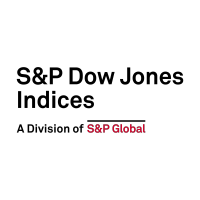S&P Dividend Aristocrats and the Search for Income
A company’s dividend track record is often seen as a sign of corporate maturity and balance sheet strength, but not all dividend strategies are created equal. Join S&P DJI’s Anu Ganti, Ben Voros and Elizabeth Bebb for an exploration of what makes the S&P Dividend Aristocrats Index Series unique.
S&P Momentum Indices Leading the Pack
Momentum strategies, which tend to thrive in trending markets, have recently delivered strong performance due to continued economic strength and positive market sentiment. In the past 12 months, the S&P 500® Momentum Index posted notable outperformance compared with some other S&P 500 factors, as well as the S&P 500 itself (see Exhibit 1). In this…
A Strong Start for the Newly Launched S&P 500 High Dividend Growth Index
Last December, in a prior blog, we introduced the S&P 500® High Dividend Growth Index, an innovative index that utilizes the S&P Global Dividend Forecasting Dataset to incorporate a forward-looking assessment when selecting constituents. The index is unique since it tracks companies in the S&P 500 that have not only consistently grown their dividends in…
S&P High Yield Dividend Aristocrats Performance during Past Macroeconomic Cycles
The S&P High Yield Dividend Aristocrats® tracks companies that have grown their dividends for a period of at least 20 consecutive years, offering equity participation and the potential for enhanced dividend income. Our recent blog highlights that the dividend growth rate for the S&P High Yield Dividend Aristocrats has exceeded inflation over the long term…
What’s It Take to Be an S&P Dividend Aristocrat?
Not all dividend strategies are created equal. Discover how the S&P Dividend Aristocrat Indices screen for companies with a long track record of stable and increasing dividends to identify quality dividend growers and avoid the dreaded dividend trap.
The Quantitative Metrics for Identifying an Economic Moat
In our previous blog, we introduced the newly launched S&P 500® Economic Moat Index by reviewing its methodology, index characteristics and historical performance. In this blog, we will examine the specific quantitative metrics used to identify the companies with the widest economic moats. Furthermore, we will discuss the complementary nature of the metrics, which has…
- Categories Factors
- Tags 2024, economic moat, factors, George Valantasis, S&P 500 Economic Moat Index, US FA
- Categories
- Factors
Exploring the Characteristics of the Dow Jones U.S. Select Dividend Index
Indices that not only track the broad equities market, but also offer the potential for enhanced dividends may appeal to those searching for income within the equity asset class. In this blog, we investigate what the Dow Jones U.S. Select Dividend Index has historically brought to the table, including high dividend income, superior risk-adjusted performance…
Identifying Economic Moats Using a Quantitative Lens: The S&P 500 Economic Moat Index
Popularized by Warren Buffett, the term economic moat refers to a company’s sustainable competitive advantage that allows it to preserve market share and generate high profits over the long term. In this analogy, companies are compared to medieval castles surrounded by deep and wide moats, which protected the castles from attack. In the same way,…
- Categories Factors
- Tags 2024, economic moat, factors, Rupert Watts, S&P 500 Economic Moat Index, US FA
- Categories
- Factors
Current Discounted Valuations & Historical Downside Protection: The S&P High Yield Dividend Aristocrats Index
In our last blog, we highlighted the superior long-term performance of the S&P High Yield Dividend Aristocrats® versus the S&P Composite 1500®, as well as compared to long-term Treasury bonds and the CPI. In this blog, we will shift our focus to examine the current discounted valuations and enhanced dividend yields of the S&P High…
How Are Some Dividend Growers Outpacing Inflation and the Benchmark?
With the 10-year U.S. Treasury yield hovering around 4.5%, investors may be able to find attractive yields without taking on too much risk. The challenge, however, is maintaining purchasing power relative to inflation (USD 1,000 in December 1999 was only worth USD 538 as of March 2024). For those seeking income and total returns that…



















































